|
Our crew at Gravel Grading and Excavating has been hard at work cleaning and rehabbing our equipment to get each piece ready for the 2020 season. Every winter we make sure to complete routine maintenance on our fleet of tractors and equipment, including washing and waxing them for protection from the harsh Midwest weather seasons. This past winter we focused a lot of our work on our bulldozer. In addition to removing the dust and dirt from the belly pans of the John Deere 750J dozer, we replaced the tracks and added a fresh coat of paint. When it comes to maintaining bulldozers, the undercarriage is always first priority. Daily inspections should look for wear points, abnormal wear, or anything that could reduce production and increase downtime. It’s also essential to keep the roller frame as clean as possible with a regular clean-out schedule. Once material is packed into the undercarriage, it can cause a tight track and increased wear rates on the undercarriage components. When considering the aforementioned, our crew decided this winter would be the best time to remove and replace the tracks as well as the rollers. In addition to replacing the track and rollers, our crew gave the bulldozer a fresh coat of paint once we had thoroughly washed and waxed the machine. With spring officially here, let us know If you have a job for us in 2020 by giving us a call today!
1 Comment
In the summer months when the weather is warm and the dirt is compact, our Gravel Grading & Exacavating crew members are able to work on projects that are unaccessible during the rainy spring season. Jobs such as stream bank stabilization and waterway shaping are reserved for this time of year, so we don’t tear up the earth or get ourselves stuck in the mud.
In projects such as these, one of the materials we rely on to “support” our efforts is rip-rap. What is rip rap? Rip-rap is large boulders and concrete pieces that are placed along waterways, bridge foundations, and steep embankments to protect the underlying dirt from erosion and scour. We frequently use this option because it is a natural-looking treatment that not only protects the earth, but it can be used for many different purposes by using various sizes and volumes of this material: 4-5” Rip Rap The 4-5” size is the smallest type of stone available. This size is ideal for preventing soil erosion on small slopes and along drainage ditches that aren’t constantly exposed to moving water. This size is also utilized in weed prevention measures along steep embankments and sometimes as base material in driveways and parking lots. 6-9” Rip Rap This size rip rap is the most commonly used size. These stones are perfect for erosion control and bank stabilization measures for streams, rivers, ponds, and other smaller bodies of water. 9”+ These pieces are ideal for shorelines with extremely heavy currents and breaking waters or in large holes and ditches. The large mass of these boulders can reinforce even the steepest grades and erosion-prone areas. Where do we use it? Rip rap is used where a structure or shoreline is continuously exposed to rushing water, such as along creeks that commonly experience flash flooding, along pond shorelines, and in field drainage areas that have steep grades. Over time the dirt in these structures is worn down and lost, which can dramatically change the lay of the land surrounding it. Our crew uses these stones to support the best measures and protect the property owners’ land. Check out some of our other “What’s New” blog entries to check out the projects we’ve done that utilize rip rap, such as gabion baskets and stream bank stabilizations. Valentine's Day...the annual day where we men get to express our love without shame, has recently come and gone, but we thought this week would be a good opportunity to remind our followers why we at Gravel Grading & Excavating aren't just tough, good-looking guys. We love a lot of things. 1. We love to help people. In our line of work, we are lucky to help people build their dreams. Whether we get called in to help dig the foundation for a family's new home, install ag tile for a farmer making the best use of his field, or dig a new pond for some fishing and relaxation, we take great pride knowing that the work we do helps our customers. 2. We love to drive big machines. Remember how much fun it was to play in the sandbox as a kid? Especially with those toys you could sit on and use the hand levers to scoop and move the sand? Yeah. We get to do that every day. At work. Now the sandbox toys are bigger, and they have engines and names like John Deere, Caterpillar, and Bobcat on the side. 3. We love to play in the dirt. Much like #2, our favorite things to do as kids have become our jobs. There's nothing like the satisfaction of building something new or solving an engineering problem. It's a humbling experience to use our experience and skills to reroute waterways or reshape the landscape, and it never gets old. 4. We love our local communities. Oftentimes our crew gets called in to help on public works projects, and we enjoy helping our towns infrastructure function better. In the last year we've helped create new parking lots for our local schools, prep sidewalks to keep our citizens safe, and work below the surface to keep water and sewer services functioning. The guys on our crew volunteer at local events and fundraisers and serve the community as members of organizations. Our homes and communities are important to us, and we're thankful to serve them. 5. We love to help people. In our line of work, we are lucky to help people build their dreams...oops. We already said that. But really, it's the best part of our job. Thanks so much to our customers, family members, friends, and followers. We are grateful for your business in the past, and we look forward to even more projects in 2018. Is there anything more exciting or nerve-wracking than purchasing a new home? For all the opportunities buying a new home provides (from space to entertain family and friends to the opportunity to make years of memories), a buyer also has to be critical about the condition of the structure and the cost of improvements and upkeep that are sure to come along the way. Such was the case for the Johnson family of Dubuque, Iowa. Long-time friends of Terry and the Gravel Grading & Excavating family, the Johnsons knew just who to turn to when they purchased their "new" older home in the heart of the city. While the house itself was sound and able to be updated with a few DIY projects, the crumbling asphalt driveway was a job they knew needed to be hired out. So Terry stepped in and determined that complete removal of the existing asphalt drive would be required, and pouring a new concrete lane would be the Johnsons best option. The Gravel workers would need to be very careful with their equipment and precise with their measurements, as they wouldn't want to sacrifice the soundness of the home or detached garage during the demolition phase, nor would they want to harm the root systems of the countless mature trees on the property. Armed with their decades of experience and equipment, Terry and the guys got to work. Phase one of the project was to remove the existing structure. So with mini excavators and Bobcat skid loaders in tow, the crew was able to quickly break up and excavate the existing asphalt, load it into the waiting trucks, and haul away for disposal. Phase two was where the job got especially tricky. It was in this phase that the dirt below the former driveway needed to be cored-out and leveled with a laser. This required precise, experienced, and patient dozer and excavator operators. Working carefully as possible along the side of the house, the men of Gravel Grading and Excavating took great precautions to ensure the heavy equipment didn't butt up against or remove too much dirt that would compromise the structural integrity of the decades-old home. Thanks to some extreme caution and technological tools, the bed of the new driveway was established and prepped for the new surface. With the help of local concrete specialists Curt Curoe of Bernard, Iowa, and his crew from Horsfield Construction in Epworth, the driveway was poured and leveled. Once dry, it was time for Gravel Grading & Excavating to bring their equipment back for final grading and dirt work around the new lane, and prepping of the ground for new grass seeding. Thanks to the patience of our crew and the expertise of HCI, the Johnson family's driveway went from unappealing and mangled to smooth and safe for years to come. We appreciate their confidence in Gravel Grading & Excavating, and we wish them a very merry first Christmas in their "new" old home. As a homeowner, there are many systems in your home that you depend on every day for the comfort and safety of your family: heating, cooling, electrical, internet, etc. But for your peace of mind (and your wallet), the system you cannot have fail in your household is your septic. With all the water the average family consumes daily in their bathrooms, washing machines, and kitchens, having confidence in your home's wastewater collection and treatment system is priceless. Gravel Grading & Excavating recently had the opportunity to complete a new septic system install for the Hosch family of rural Cascade, Iowa. For this project, we worked closely with the family and state of Iowa and EPA codes and regulations to make sure the new system was both functional and environmentally sound. After weighing their options and spending some time consulting with Terry, the homeowners decided that a septic tank and drainage field system was their family's best choice. How does it work? All water running out of the house filters into a two-compartment, water-tight septic tank. The heavier, solid waste settles to the bottom of the first compartment in the tank, while oil, grease, and waste water floats to the top and moves into the second chamber. From the second chamber, liquid wastewater (effluent) travels out of the tank and into a series of pipes laid out in an underground drainfield. This drainfield moves water out of the piping through a series of both man-made and natural materials to percolate through sediment, rock, and soil to naturally clean and purify the wastewater before it reaches the water table or the surface as safe, drinkable water. Time for installation: First, we had to go to the site and assess the best location on the property for the drain/leach field. For this, we needed both the square footage necessary for the drainfield and proper soil quality that had the capacity to absorb and purify effluent exiting the system. Once we determined the proper location, our crew came to the site with our excavating equipment to dig out the pit for the tank and drain field. The tank's trench was then lined with gravel and tested for level to ensure the proper fall to the pipes for optimum drainage. Our crew was then able to set the tank in place and begin assembling the drainfield. Our crew started this stage of the install by backfilling the trench with soil and gravel to form the naturally-filtering layers. Each layer was carefully graded to assure correct degree of fall for the pipes and then measured to ensure accurate thickness for optimum water treatment and to comply with Iowa and EPA code. After ensuring proper base protocol, the Gravel Grading & Excavating crew began laying out the pipes and covering them with layers of gravel, landscaping mat (to prevent plant and tree roots from growing into and thus disrupting the drain field), and topsoil. Gravel Grading & Excavating is licensed with the state of Iowa for residential septic system installation, and we follow proper protocol and follow-up with the DNR to make sure that our projects are both functional for your family and safe for the surrounding environment. Thank you, Hosch family, for choosing us for your septic installation, and thanks to all our customers for their ongoing business. Need more information? Check out these helpful sites listed below: State of Iowa Laws and Codes: http://www.iowadnr.gov/Environmental-Protection/Water-Quality/Private-Septic-Systems EPA Standards & Guidelines: https://www.epa.gov/septic More detailed recommendations and installation instructions: https://www.thenaturalhome.com/septic.html For many local farmers, having a creek run through their property is an advantage. Creeks can provide access to water for pasture livestock, a boundary between fields, or recreation for the family. Sometimes, creeks can be a source of headache for farmers, as was the case with this project at the Takes farm located east of Cascade, Iowa, on Bellevue-Cascade Road. Each day when it was time for chores, local farmer John Takes would fill his feed wagon and cross the county highway into his cattle pasture. Once inside the fence, John would have to maneuver his tractor and wagon down and then back up the steep sides of the small creek to access his herd. On its best days this caused his equipment to bottom-out, creating a dirty mess that was hard on his machinery, and on the worst days in times of high water, the pasture was nearly inaccessible. To remedy this problem, John called Terry and Gravel Grading and Excavating to help him devise a solution. Terry recommended installing a new creek crossing, complete with prefabricated slatted concrete slabs to aid in traction for equipment and three ag-tile culverts that would allow the creek to maintain its flow below the new structure without compromising its stability. To begin, the crew of Gravel Grading & Excavating waited for a dry spell, so the creek would be low enough to work around. Then drawing on their extensive experience and laser grading equipment, they determined the optimal location of the path across the creek, as well as the appropriate height for the new crossing so as high water events would not breach the new lane. The guys then moved in with graders, skid steers, and excavators, to begin the process of moving dirt to prepare for the installation of the culverts. A bed was prepared for the pipes to lay upon, and once again the laser levels were used to determine the proper degree of slope for maximum water drainage. Once this was prepared, the plastic piping could be installed and backfilled with dirt and rock for stabilization. An extra measure was taken for erosion control by pouring concrete walls on each side of the new road to prevent washouts in heavy rain events. The crew then went about pouring a final layer of concrete to top off the new crossing, placing concrete slats on both sides, and regrading and dumping new gravel along the newly-established path for the finishing touches. Shortly after the conclusion of the creek crossing, a storm passed through, testing the effectiveness of Gravel Grading & Excavating's work. As expected the crew was able to move the earth for our customer John, and the culverts worked just as planned, allowing the creek to maintain its flow through the pasture while allowing John to access and feed his cattle. Thank you to the Takes family for choosing Gravel Grading and Excavating for this project, and be sure to give us a call for any of your dirt work needs. Flooding. It happens almost yearly anymore in Eastern Iowa. As a homeowner it's important to have flood insurance to protect your residence and valuables if you lie in a flood plain or are prone to water seepage in your basement. As a landowner, you sometimes need to take other preventative measures, as you can see below with our friends the Ostwinkles who live on North Cascade Road between Cascade, Iowa, and Epworth, Iowa. For this family, the stream in the pasture behind their home provided exquisite views and relief for their cattle in the hot summer sun. But after several years of flooding (and one extreme flood event in 2013), the banks along the stream bed had been eaten away and were now unstable and dangerous. To help address this problem, the Ostwinkles turned to Gravel Grading & Excavating. We started by sending company owner Terry Gravel out to the property to assess the situation. Terry took some initial photos and discussed with the owners what they were hoping to achieve on their land. From those steps, Terry recommended completely restructuring the creek banks and stabilizing them with large chunks of crushed rock and concrete, otherwise known as rip-rap. Terry and crew got started by grading back the banks of the creek with one of our John Deere tractors and dirt wagon. This wagon has the hydraulic ability to both scrape off and then relocate dirt and gravel. Once that step was completed, excavator operator Brian Noonan dug out additional sediment to improve water flow and creek drainage, particularly around culverts. Our dozer was then called upon to finish out the grade, enabling our crew along with our friends from Eastern Iowa Transport to bring in truckload after truckload of rip-rap. This would ensure that all our work would be protected for years to come, and high water flow would not undermine the stability of the new creek banks. Our last step was to cover the rip rap with a layer of dirt to fill in the crevices and lay grass mat that would promote the growth of grass and vegetation to slow water flow, thus preventing erosion and loss of topsoil in future rain events Check out our photos and video below for a step-by-step walkthrough of the Ostwinkle property project from start to finish, and give Gravel Grading & Excavating a call for your next dirt-work project. We'll move the earth for you! Farmers in this area can tell you, no matter the season, there's always work to be done. Though summer may be overlooked as a time to just sit back and watch the corn grow, this time of year our friends in the ag sector keep busy with spraying and side-dressing crops, cutting and baling hay, tending livestock, and prepping machinery for the impending harvest season. Summer is also a time where farmers survey their fields for ways to improve efficiency and production and to implement erosion control measures. Reconstructing waterways is one way to satisfy these needs. By clearing (cutting down and removing) and grubbing out (removing roots and stumps left behind) freely-growing trees and shrubs along fence lines and waterways, farmers can gain acres for additional planting which increases their production. Or, as in the case of our clients pictured below, they needed additional erosion-control measures put in place to reduce field runoff after the heavy summer rains. In these photos from a crop farm near Monticello, IA, you can see how trees and shrubs had grown up along the creek near this field. Not only did these growths get in the way of farm machinery, but the steep banks on the sides of the creek meant the landowner was losing precious dirt and topsoil when rainwater drained off the field. To help aid water drainage, Gravel Grading & Excavating came in to alleviate the problem. Using dozers and excavators, we started with clearing and grubbing the existing creek banks. All trees and shrubs were removed and hauled away using our dump wagon. We then laid back the banks at a better grade to allow for maximum water retention and less loss of soil for our farmer. Our last step of this project was to lay down grass mat and seed to encourage quick regrowth of natural grasses and ground cover. Are plant growth or soil erosion something you struggle with on your farm? Let the experts at Gravel Grading & Excavating help reconstruct your waterways and move the earth for you! With the storms that are bearing down on our area today, this subject seems particularly relevant. Water retention and detention ponds: What's the difference and when should you use each? Retention ponds: these are what you picture in your mind when you think of a traditional pond. Water pools here and stays here permanently, allowing soil and sediments to settle to the bottom. Water conservation and management is a key benefit of this structure, but these are also aesthetically pleasing with recreational benefits such as fishing, kayaking, etc. for developers and land owners, and offer access to water for farmers and their livestock. Detention ponds: these ponds are useful in heavy rain and runoff events. Water pools here for a short period of time, allowing some settling of particles, and is then slowly released. These allow for more controlled drainage in order to prevent erosion whether in an urban, paved setting or in a rural location. Whether it's retention or detention you're looking for, Gravel Grading & Excavating has your solution. With over a decade of experience in water conservation and erosion control, we can successfully plan and construct the pond that is just right for you. For more information and sources for this post, please refer to the links found in the buttons below: Very simply, gabion baskets are a great option for farmers or developers looking for erosion control on sidehills, stream/river banks, road developments, or residential landscaping. These structures help greatly reduce soil erosion on steep inclines or in areas susceptible to water flow.
To create a gabion basket, first the land needs to be graded properly to optimize desired flow of water. Then a tarp and large wire basket are set in place. The next and most labor-intensive step is the placing of the rock or rip-rap. This will help slow the flow of water, and therefore reduce the amount of dirt that is eroded. Rock size and depth vary depending on the degree of water control needed. If a gabion basket is something you need on your land, give Gravel Grading & Excavating a call at 563-542-6610. |
hereYou'll find all the newest products and services recommended by Terry and Gravel Grading & Excavating. Categories
All
Archives
April 2024
|

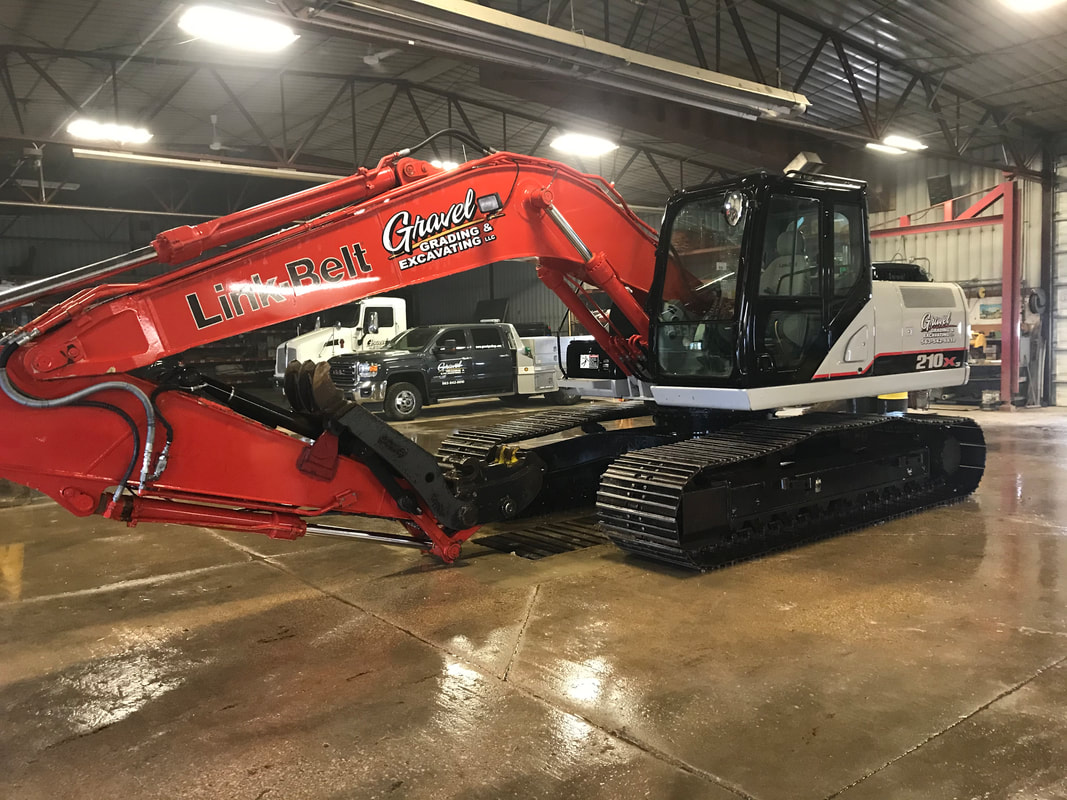
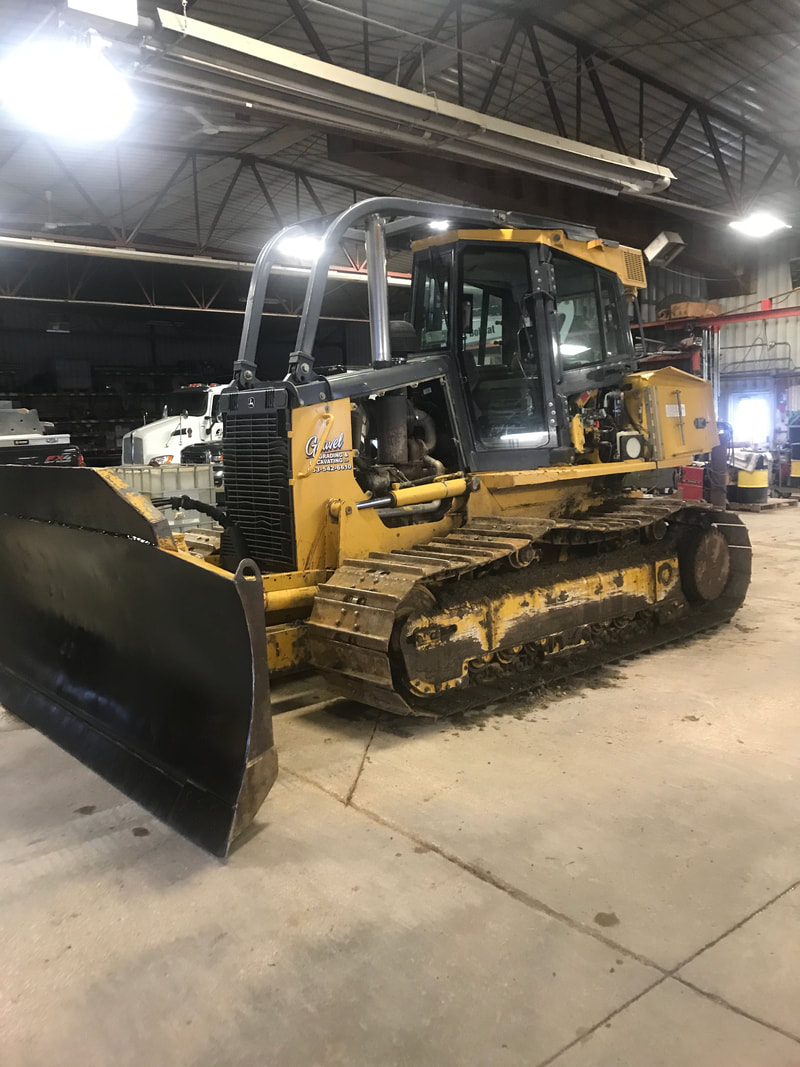
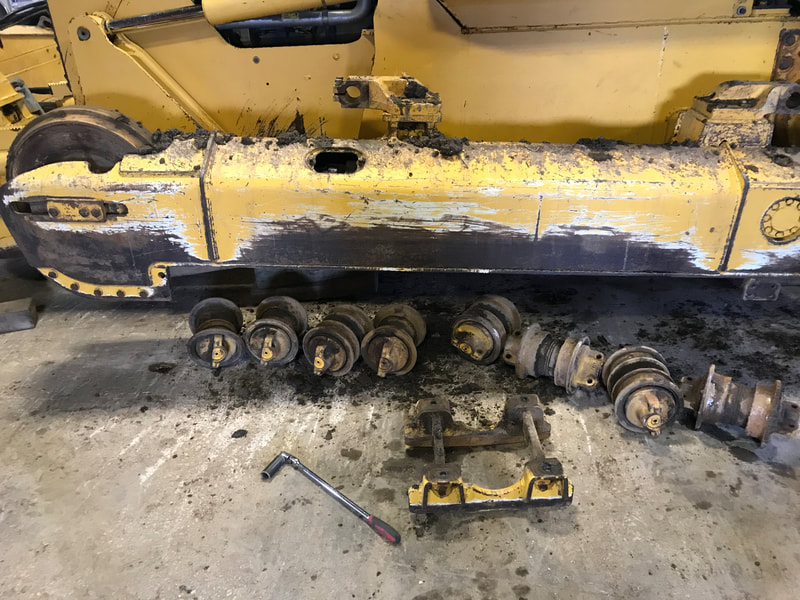
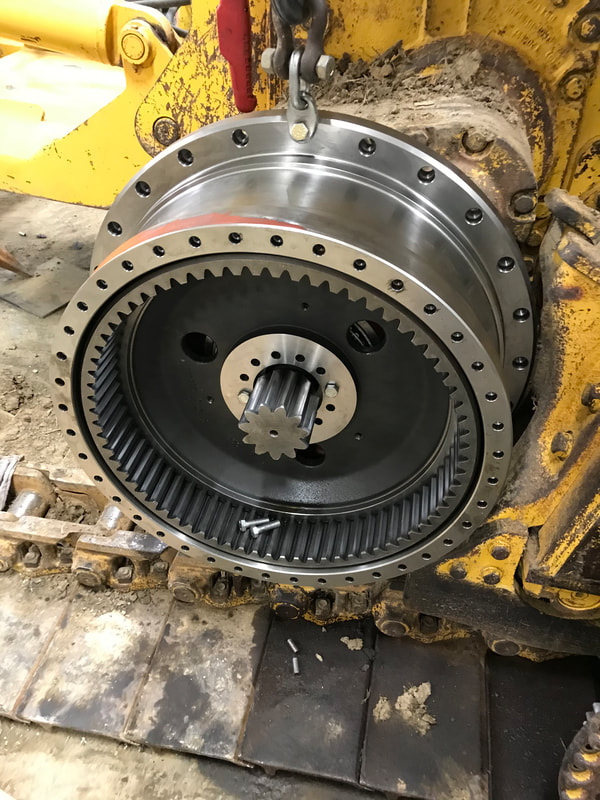
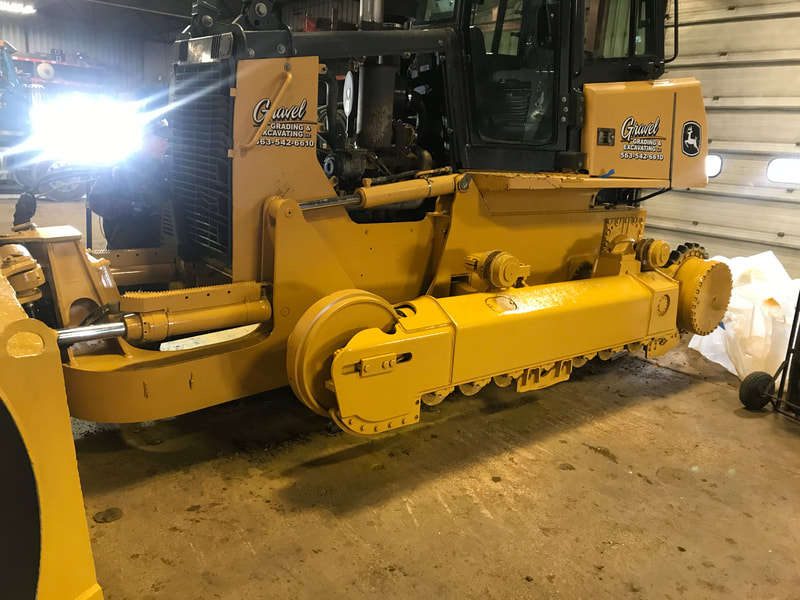
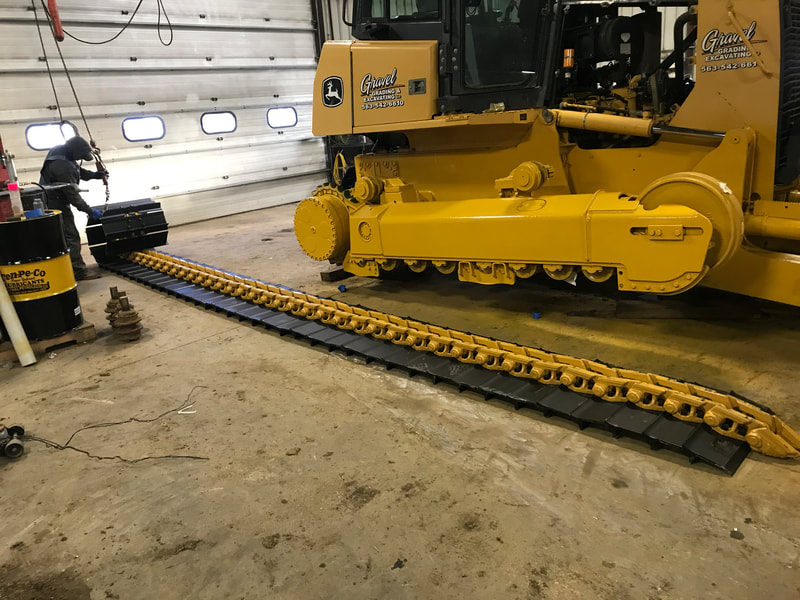

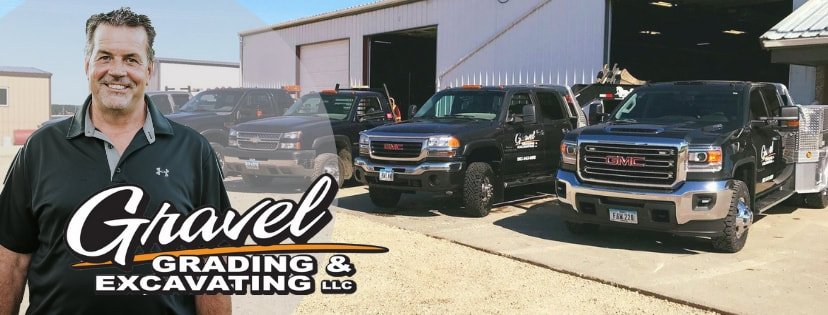
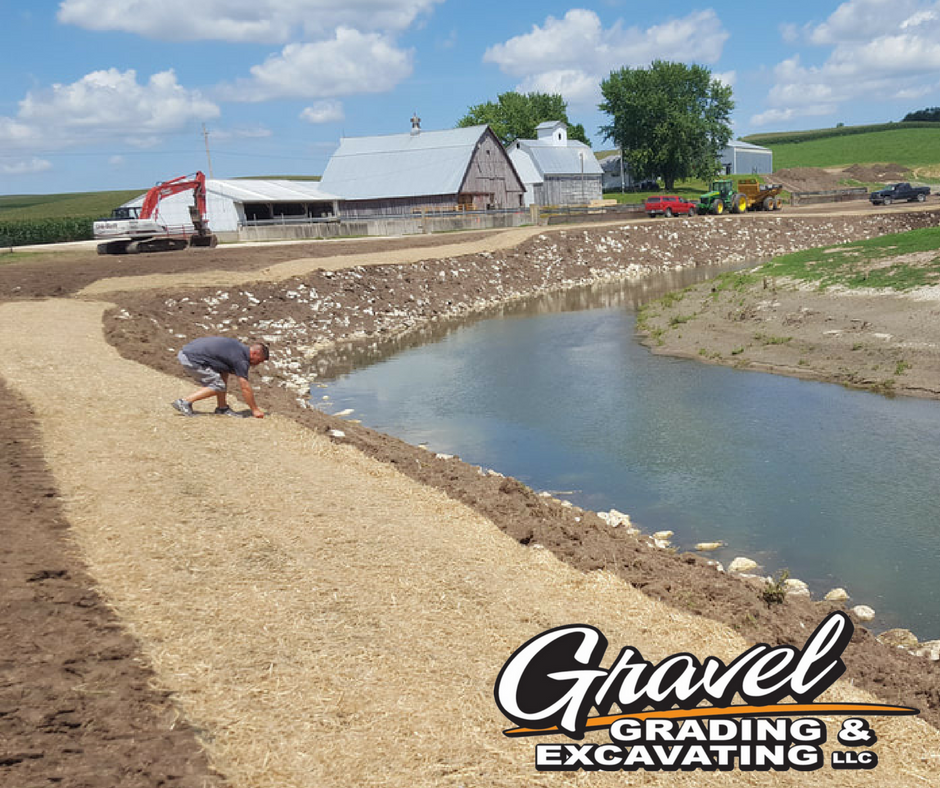
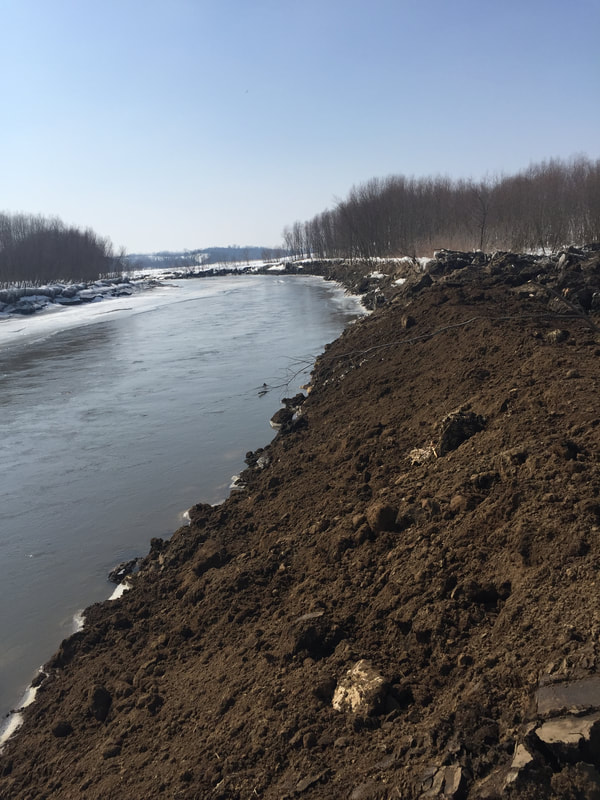
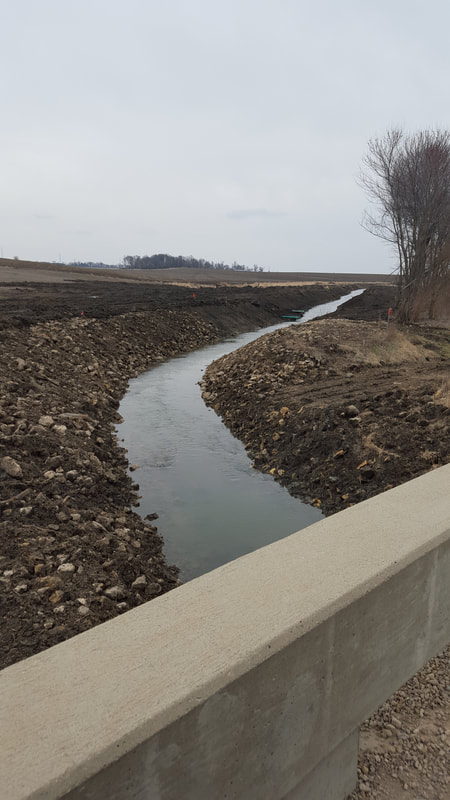
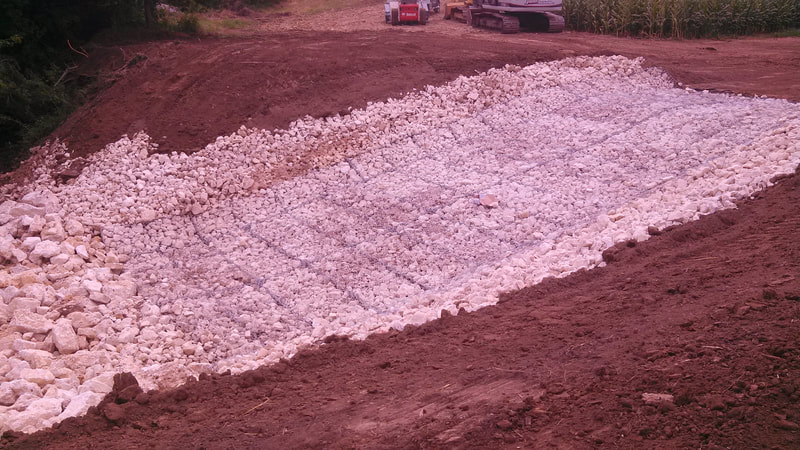
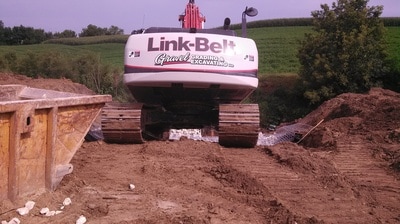
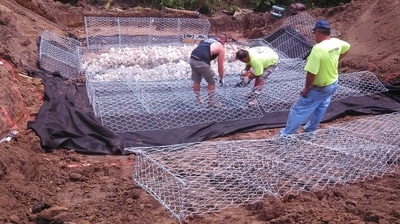
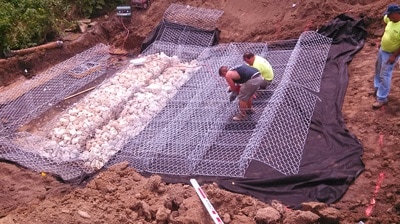

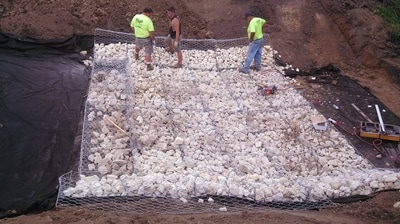
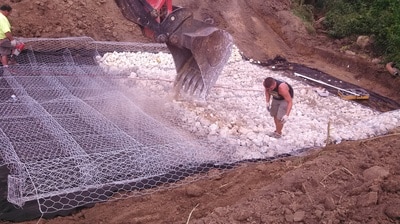
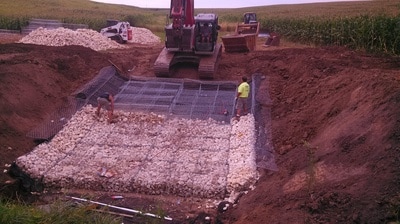
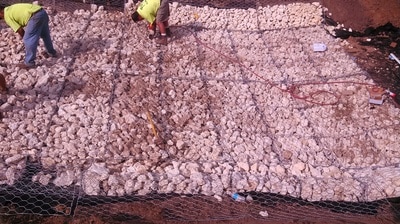
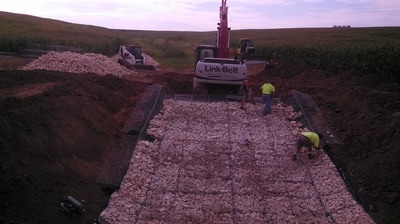
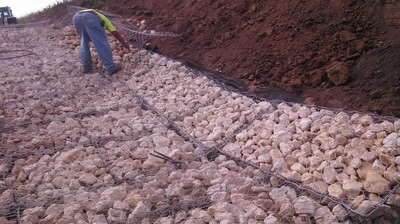
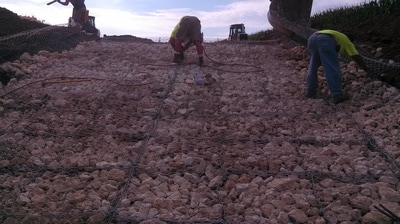
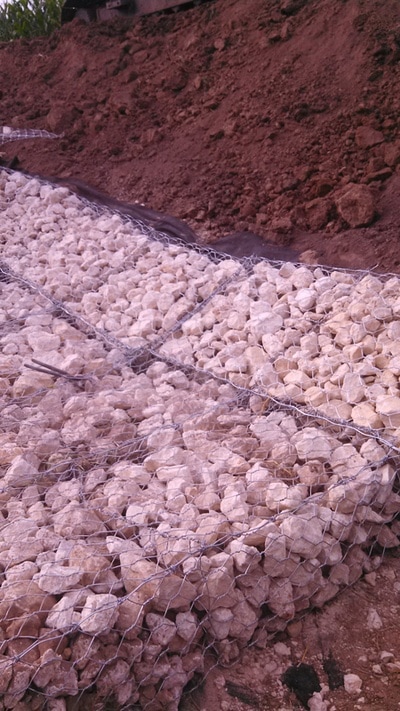
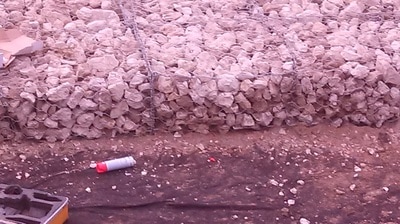
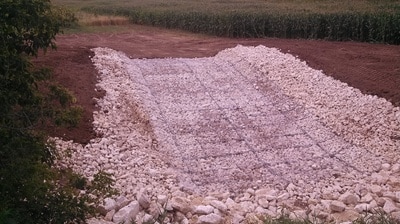
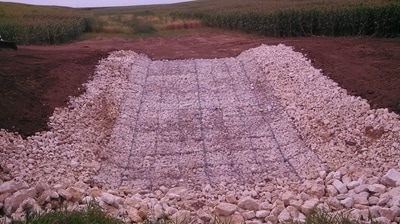
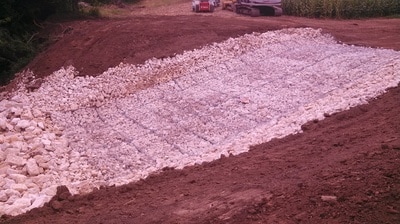
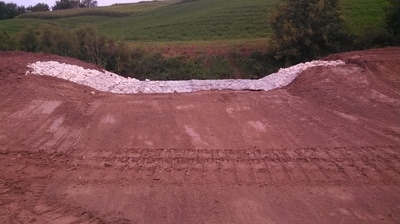
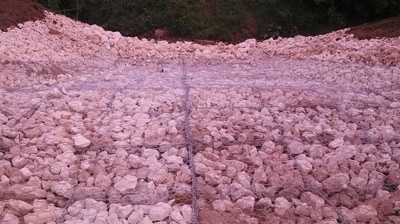
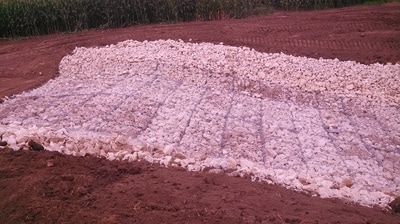
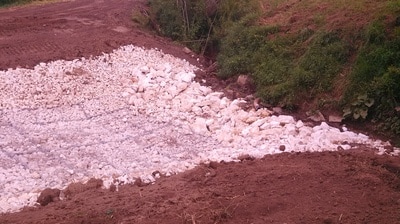
 RSS Feed
RSS Feed
